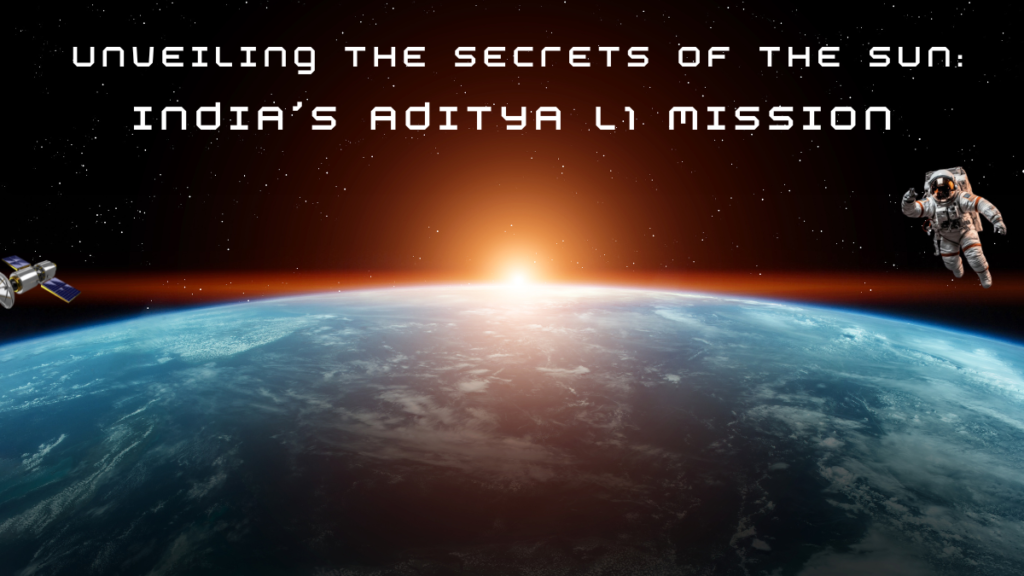In a historic moment for India’s space exploration efforts, the Indian Space Research Organization (ISRO) recently launched the Aditya L1 Mission, marking the nation’s inaugural solar mission. This mission, set to embark on a four-month journey, aims to deepen our understanding of solar activity and its profound impact on Earth, neighboring planets, and the enigmatic realm of space weather.
Delve into the key highlights of the Aditya L1 mission and its objectives, shedding light on its pivotal role in advancing our knowledge of the Sun.
| Table Of Contents: A Glimpse Of The launch Charting A Unique path The Aditya L1 Mission Core Objective Unraveling Solar Mysteries |
A Glimpse of the Launch:
The Aditya L1 mission soared into the skies atop the dependable Polar Satellite Launch Vehicle (PSLV) rocket on the momentous launch day. A little over an hour later, the Aditya L1 satellite gracefully separated from its launch vehicle, commencing its epic journey towards the Sun.
Charting a Unique Path:
The Aditya L1 mission’s trajectory is reminiscent of the Chandrayaan-3 mission. It will initially establish an Earth orbit, gradually ascending and accelerating until it positions itself within the confines of the first Lagrange point (L1) shared by Earth and the Sun. This strategic location at the L1 point offers unparalleled advantages, allowing the satellite to maintain a stationary position with minimal fuel consumption. This mirrors NASA’s decision to station the James Webb Space Telescope at the second Lagrange point (L2).

The Aditya L1 Mission Core Objective:
Aditya L1 has an impressive array of seven payloads designed to scrutinize the Sun’s photosphere, chromosphere, and the outermost layers of its atmosphere, known as the corona. These payloads consist of electromagnetic, particle, and magnetic field detectors. But why this fascination with the Sun? The answer lies in the Sun’s potential to disrupt space weather, which can adversely affect our technological infrastructure and human health. Thus, understanding the Sun becomes paramount.
Unraveling Solar Mysteries:
The Aditya L1 mission is poised to unlock some of the most intriguing secrets of our star. Here are a few of the compelling questions ISRO hopes to answer through its scientific instruments:
Coronal Mass Ejections (CMEs):
These colossal eruptions of magnetic fields and plasma from the Sun’s corona are breathtaking and capable of wreaking havoc on Earth’s magnetic field. Aditya L1 will closely examine CMEs to enhance our predictive capabilities.
Magnetic Field of the Corona:
The Corona’s magnetic field is a potent driver of space weather phenomena. By studying it, scientists can improve their ability to forecast solar storms and their potential impact on our technological systems.
Chromosphere and Corona:
These upper layers of the Sun’s atmosphere remain mysterious. Aditya L1’s instruments will provide unprecedented insights into these regions, shedding light on their composition and behavior.
Solar Wind Acceleration:
Understanding what propels particles from the Sun, leading to the creation of solar wind, is crucial for comprehending space weather dynamics and their effects on Earth.
The Sun’s Atmospheric Puzzles:
The Sun’s outer atmosphere, the corona, is mysteriously hotter than its surface. Aditya L1 aims to investigate the mechanisms behind this intriguing phenomenon.
The Aditya L1 mission represents a significant leap forward in India’s space exploration journey, offering us a front-row seat to the Sun’s enigmatic activities. As we embark on this cosmic voyage of discovery, we can anticipate a wealth of knowledge that will deepen our appreciation of the Sun and bolster our preparedness for the challenges posed by space weather.
Aditya L1 is poised to illuminate the solar mysteries that have captivated humanity for centuries, reinforcing India’s role as a critical player in space exploration.
Read more blogs from us:



